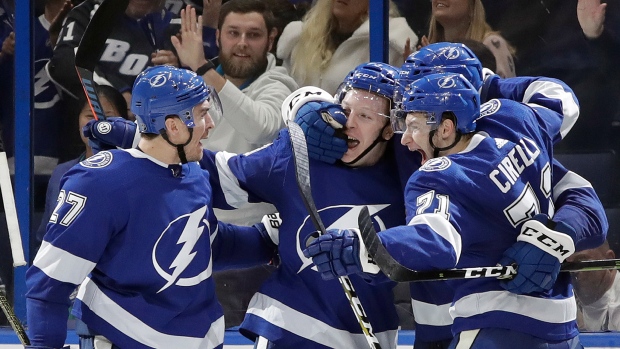Jan 17, 2019
Special teams set Tampa Bay apart
The Tampa Bay Lightning are dominating the NHL this season, powered by special teams units that are performing at outlier levels, Travis Yost writes.
By Travis Yost

Here’s one of the questions a number of contending teams will be asking themselves over the next few weeks as they ponder transactions ahead of the trade deadline: Can this move close the talent and performance gap between our organization and the Tampa Bay Lightning?
The Bolts are a runaway train that has dominated the National Hockey League all season long. What is particularly scary is the fact that they don’t appear to have a weakness. We are talking about a team that’s fourth in the league in Goal% at 5-on-5, armed with the league’s most productive power-play unit (11.2 goals per 60 minutes) and sixth-best penalty kill (5.7 goals against per 60 minutes).
All in, the average Tampa Bay Lightning game – the average! – sees them winning by more than a goal. We have seen well-rounded teams in the past, but it seems as though Jon Cooper’s team has taken it to the next level.
Tampa’s special teams prowess is particularly noteworthy. Last season, a year in which they won the Eastern Conference, the Bolts were +9 net goals on special teams. That means they added about 1.5 wins to the standings through special teams performance alone – a respectable number. However, this year has been a different animal. Just past the halfway mark, the Bolts are +25 net goals via special teams, worth just over four wins in the standings. That is a Herculean performance, and it goes without saying that they lead the league here by a considerable margin.
But how are other teams impacted – be it favourably or unfavourably – by their special teams play? I went through every team in the league and netted out how many wins each team has added to the standings by the same measure, under the guidance of about six net goals equating to one win.
Here is what that looks like:
Tampa Bay is the only outlier here, though we can see a few other exceptional performances down the graph. As one example, Arizona has been buoyed by an impressive penalty kill that is only four goals in the red this season. For a parallel there, consider the likes of Chicago (-35 on the penalty kill), Washington (-35 on the penalty kill), or Los Angeles (-32 on the penalty kill).
The Kings are noteworthy because not only do they have one of the league’s worst penalty kills by net goals, they also have one of the most futile power plays. With more than 200 minutes of power-play time this year, the Kings have outscored their competition 17 to five (+12). Again, consider other teams around the league: the aforementioned Lightning are +44 on the power play, the Avalanche +35, and the Jets +35. On power play performance alone, the Lightning, Avalanche, and Jets are about five wins better than the Kings.
It is also interesting to see how special teams have trended with overall team performance in the standings over time. Below, I have plotted each team’s net wins added by game interval over the course of the season. Some teams – like Tampa Bay – are a linear, northbound line. Other teams, like Los Angeles, are consistent negatives.
Net wins added, season-to-date:
Through the first month of the season, Toronto and Washington – perhaps rather predictably – were carrying the league’s most and second-most productive power-play units in the league. Toronto in particular was carrying otherworldly goal-scoring rates, averaging more than 14 goals per 60 minutes of play. Washington was similarly productive, as they have historically been in the Alexander Ovechkin era.
Since their strong start, those two teams’ power play production has plummeted to 18th and 21st league-wide, respectively. That’s stunning considering the weaponry and personnel available to Mike Babcock and Todd Reirden, and it’s another data point that is discouraging if you’re weighing their respective chances in a playoff series against Tampa Bay.
At any rate, part of the reason why Tampa Bay is so far ahead in the standings is because Toronto has been effectively net neutral from special teams all year, and Washington has actually put more losses into the standings than wins.
I don’t think that’s something anyone would have predicted last September.


